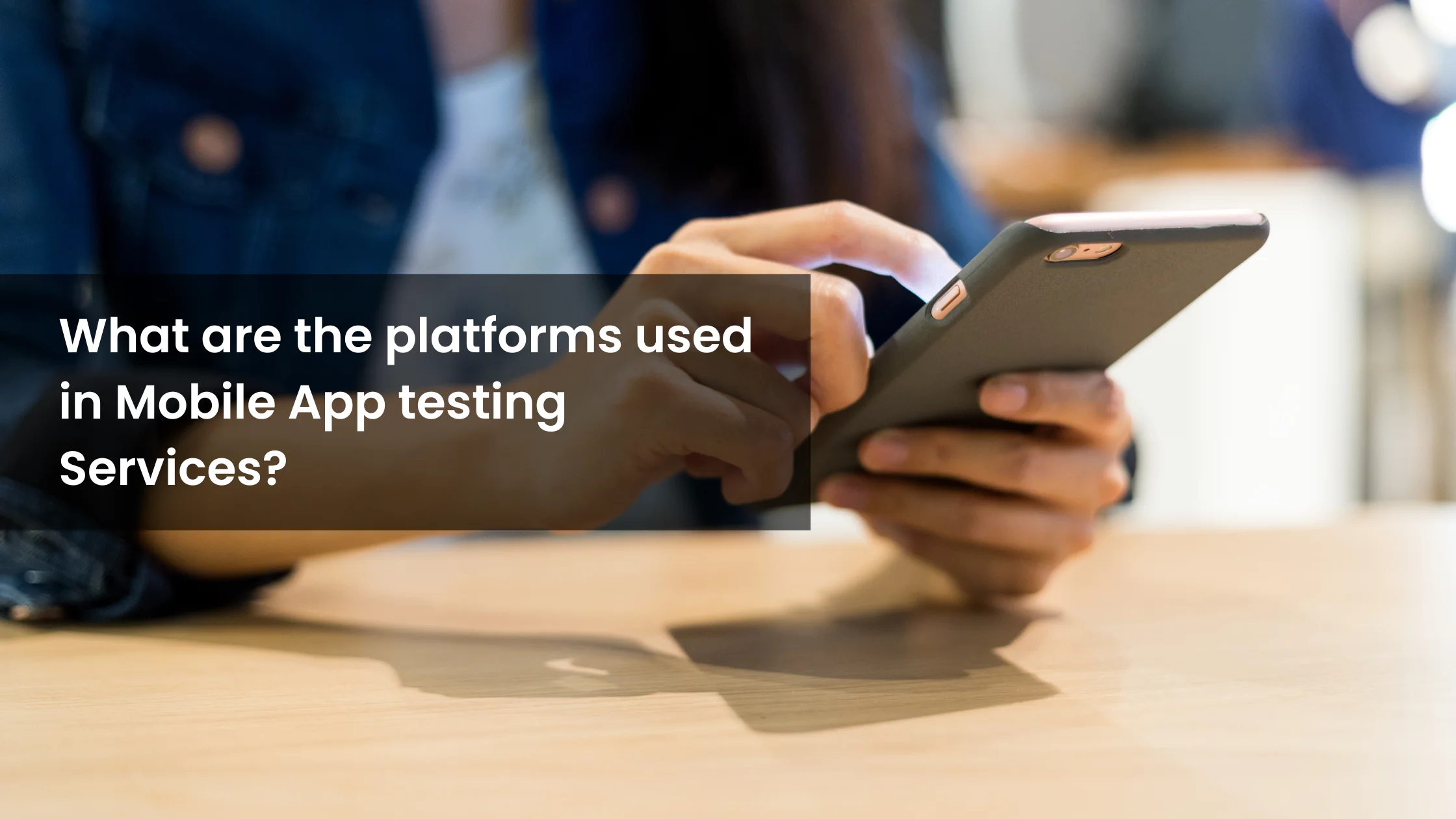The evolution of mobile phones has been extraordinary, especially with advancements in hardware and software. At the core of this transformation lies the power of mobile applications, which have turned smartphones into indispensable tools for everyday life. With nearly five million mobile apps available today—and the number growing daily—the mobile app marketplace has become fiercely competitive.
To stand out in this crowded landscape, mobile apps must excel in quality, usability, and security. This is where comprehensive mobile application testing becomes indispensable. At Testriq, we specialize in ensuring that your mobile applications meet the highest quality standards. Our expert testers employ a range of methodologies to evaluate apps on various parameters. Let’s dive into the 12 essential types of mobile application testing that we perform to ensure your app’s success.
1) Functional Testing
Functional testing evaluates whether your app operates as intended, focusing on its core functionality. This type of testing ensures seamless app installation, proper launch, and flawless operations like login/signup, navigation, and transactions.
Key checks include:
- Buttons, menus, and forms working as expected.
- Accurate rendering of push notifications.
- Verification of all user interactions.
With our Functional Testing Services, we meticulously test every function to guarantee that your app meets both user expectations and business requirements.
2) Usability Testing
Usability testing centers around user experience (UX). Unlike other testing types, it focuses on human interaction rather than technical performance. This test is conducted on real devices to simulate genuine user scenarios.
Our testers evaluate:
- Visual appeal and intuitiveness of the app.
- Navigation simplicity and response times.
Feedback gathered during usability testing helps developers make user-centric improvements, ensuring a delightful experience. Visit our Usability Testing page to see how we optimize user experience.
3) Performance Testing
Performance testing assesses your app's stability, speed, and responsiveness under different conditions. We use this test to:
- Identify bottlenecks in device and network performance.
- Conduct stress, spike, and load testing to simulate real-world challenges.
- Test recovery capabilities in adverse scenarios.
Explore how our advanced Performance Testing Services ensure your app performs flawlessly, even under heavy user loads.
4) Security Testing
Security testing is non-negotiable in today’s digital age. Users must trust your app to handle their data securely. Our security testing process includes:
- Testing against potential cyber threats and vulnerabilities.
- Ensuring user data is encrypted and protected against breaches.
- Conducting benchmark security tests and obtaining necessary certifications.
With Testriq, your app users will feel confident knowing their privacy is safeguarded. Learn more about our Security Testing Solutions and how we protect your application.
5) Interruption Testing
Smartphone usage comes with inevitable interruptions—calls, messages, low battery alerts, or OS updates. Our interruption testing ensures your app operates seamlessly in such scenarios.
We simulate:
- Incoming calls or notifications.
- Network fluctuations and device reboots.
- Charging interruptions or battery depletion.
6) Manual Testing
Despite the rise of automation, manual testing remains invaluable for uncovering issues in real-world scenarios. Our skilled testers focus on:
- Testing user interface (UI) elements and exploring edge cases.
- Verifying complex workflows.
- Performing exploratory testing to identify unforeseen bugs.
Check out our Manual Testing Services to understand how our human-driven expertise enhances app quality.
7) Compatibility Testing
With so many devices, operating systems, and network environments, compatibility testing ensures your app works universally.
We conduct:
- Backward Compatibility Testing: Verifying functionality on older software versions.
- Forward Compatibility Testing: Assessing behavior on newer and beta software versions.
At Testriq, we ensure your app delivers a consistent experience across diverse platforms and devices.
8) Localization Testing
Localization testing adapts your app to specific regions and languages, offering a personalized experience for users worldwide.
Key checks include:
- Displaying correct currency and date formats.
- Language translations and culturally relevant UI/UX.
For example, our team ensures that apps in India show INR prices, while apps in the US display USD.
9) Speed Testing
Speed testing evaluates how quickly your app responds under ideal conditions. Unlike performance testing, speed testing focuses on:
- Launch times and screen transitions.
- Comparing your app’s speed against competitors.
10) Installation Testing
Installation testing ensures seamless app installation, updates, and uninstallation processes.
We verify:
- Error-free installation on different devices.
- Compatibility with updated OS versions.
- Proper handling of user preferences during updates.
11) Memory Leak Testing
Memory leaks can cause an app to crash or drain device resources. Our memory leak testing identifies:
- Bugs that prevent memory from being released after use.
- Scenarios where apps fail when reopened multiple times.
12) Automation Testing
Automation testing accelerates the testing process for complex apps. Using advanced tools, we:
- Test workflows and validate results efficiently.
- Monitor flaky tests and ensure quick fixes.
- Maintain testing frameworks for continuous integration.
At Testriq, we leverage industry-leading tools in our Automation Testing Services to deliver reliable results swiftly.
Conclusion
Mobile application testing is crucial to creating reliable, high-performing, and secure apps. Not all apps require every type of testing—our experts at Testriq help you choose the most effective strategies tailored to your app’s unique needs.
With our end-to-end mobile application testing services, we ensure your app not only meets industry standards but exceeds user expectations. Partner with Testriq to transform your app into a market leader.
Contact Us today to explore how our testing solutions can help your app achieve unparalleled success.
 Hello there, fellow app enthusiast! So, you've developed a killer mobile app. It's sleek, it's functional, and you can't wait to unleash it upon the world. But wait—before you do that, there's a little thing called mobile app testing that you need to consider. Testing ensures your app runs smoothly across all devices and platforms, saving you from the embarrassment of crashes and bugs. In this post, we'll walk you through the main platforms used in mobile app testing services, with a sprinkle of humour and a dash of technical insight.
Hello there, fellow app enthusiast! So, you've developed a killer mobile app. It's sleek, it's functional, and you can't wait to unleash it upon the world. But wait—before you do that, there's a little thing called mobile app testing that you need to consider. Testing ensures your app runs smoothly across all devices and platforms, saving you from the embarrassment of crashes and bugs. In this post, we'll walk you through the main platforms used in mobile app testing services, with a sprinkle of humour and a dash of technical insight. Hey there, fellow tester! Ever found yourself lost in the maze of test automation tools, wondering if your trusty UFT/QTP can handle mobile test automation? You're not alone! It's like trying to figure out if your old Walkman can stream Spotify – intriguing, but slightly baffling.
Hey there, fellow tester! Ever found yourself lost in the maze of test automation tools, wondering if your trusty UFT/QTP can handle mobile test automation? You're not alone! It's like trying to figure out if your old Walkman can stream Spotify – intriguing, but slightly baffling.